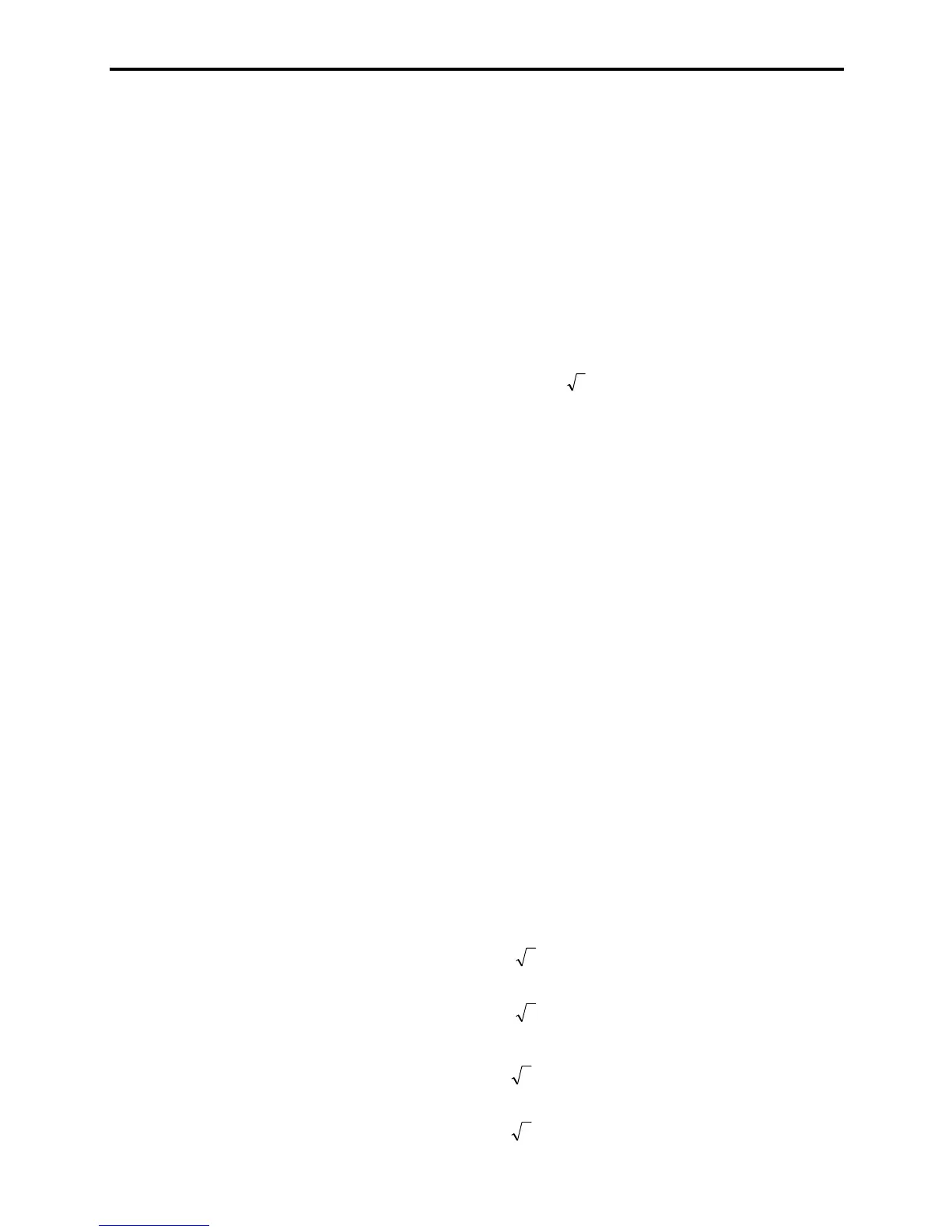G-4
Load shaft speed
Number of revolutions per minute (r/min) of a
rotating load driven by the motor, such as a fan.
Main circuit terminals
Power input/output terminals of an inverter, which
includes terminals to connect the power source,
motor, DC rector, braking resistor, and other power
components.
Maximum frequency
The output frequency commanded by the input of the
maximum value of a frequency setup signal (for
example, 10 V for a voltage input range of 0 to 10 V
or 20 mA for a current input range of 4 to 20 mA).
Related function code: F03
Modbus RTU
Communication protocol used in global FA network
market, which is developed by Modicon, Inc. USA.
Momentary voltage dip capability
The minimum voltage (V) and time (ms) that permit
continued rotation of the motor after a momentary
voltage drop (instantaneous power failure).
Multistep frequency selection
To preset frequencies (up to 7 stages), then select
them at some later time using external signals.
Related function codes: E01 to E03, C05 to C11
Overload capability
The overload current that an inverter can tolerate,
expressed as a percentage of the rated output current
and also as a permissible energization time.
PID control
The scheme of control that brings controlled objects
to a desired value quickly and accurately, and which
consists of three categories of action: proportional,
integral and derivative.
Proportional action minimizes errors from a set point.
Integral action resets errors from a desired value to 0.
Derivative action applies a control value in
proportion to a differential component of the
difference between the PID reference and feedback
values. (See Chapter 4, Figure 4.7.)
Related function codes: E01 to E03, E40, E41, E43,
E60 to E62, C51, C52, J01 to J06
Programming mode
One of the three operation modes supported by the
inverter. This mode uses the menu-driven system
and allows the user to set function codes or check the
inverter status/maintenance information.
PTC (Positive Temperature Coefficient)
thermistor
Type of thermistor with a positive temperature
coefficient. Used to safeguard a motor.
Related function codes: H26 and H27
Rated capacity
The rating of an inverter output capacity (at the
secondary side), or the apparent power that is
represented by the rated output voltage times the
rated output current, which is calculated by solving
the following equation and is stated in kVA:
3
10)A(currentoutputRated
)V(voltageoutputRated3
)kVA(capacityRated
uu
u
The rated output voltage is assumed to be 230 V for
200 V class equipment and 460 V for 400 V class
equipment.
Rated output current
A total RMS equivalent to the current that flows
through the output terminal under the rated input and
output conditions (the output voltage, current,
frequency, and load factor meet their rated
conditions). Essentially, equipment rated at 230 V
covers the current of a 230 V, 60 Hz 6-pole motor
and equipment rated at 460 V covers the current of a
380 V, 50 Hz 4-pole motor.
Rated output voltage
A fundamental wave RMS equivalent to the voltage
that is generated across the output terminal when the
AC input voltage (supply voltage) and frequency
meet their rated conditions and the output frequency
of the inverter equals the base frequency.
Required power supply capacity
The capacity required of a power supply for an
inverter. This is calculated by solving either of the
following equations and is stated in kVA:
60Hz)(220V,currentRMSInput0223
or
50Hz)(200V,currentRMSInput2003
(kVA)capacitysupplypowerRequired
uu
uu
0Hz)6(440V,currentRMSInput4403
or
50Hz)(400V,currentRMSInput4003
(kVA)capacitysupplypowerRequired
uu
uu

